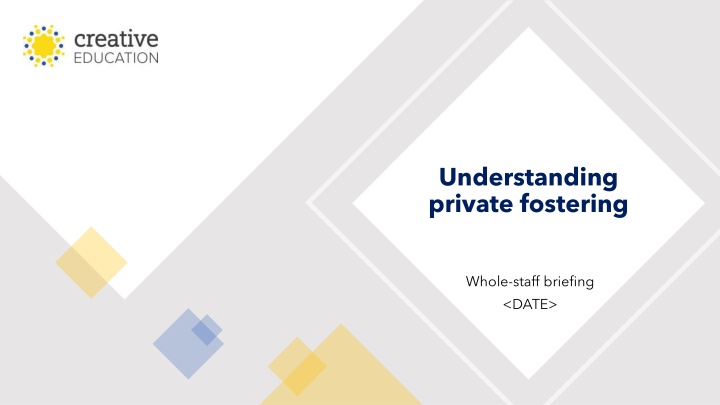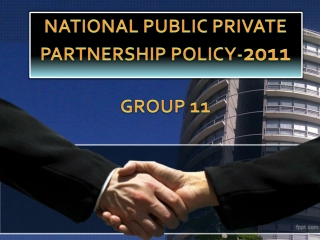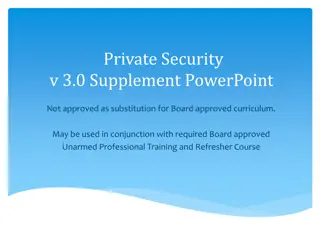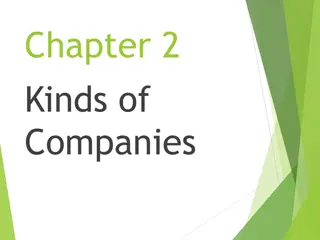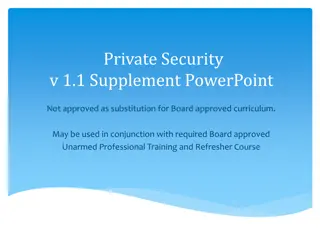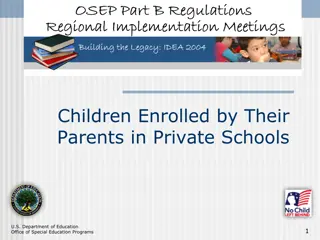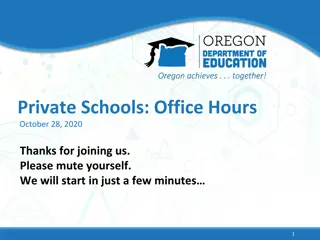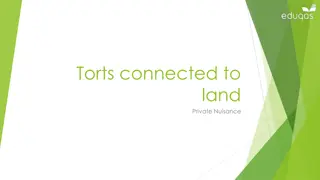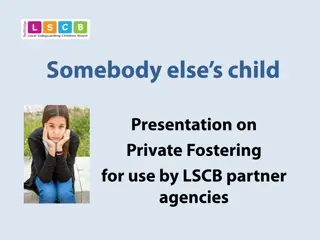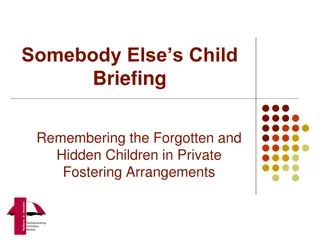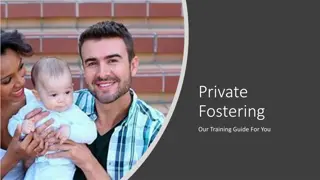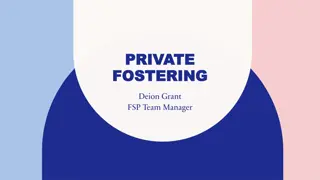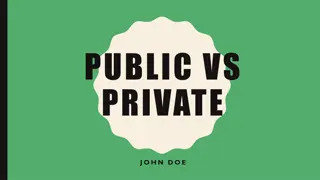Private Fostering Basics
A private fostering arrangement involves care for a child under 16 (or 18 if disabled) by someone not a parent or relative. Understand the responsibilities and risks. Always report concerns to the Designated Safeguarding Lead promptly.
Uploaded on Mar 22, 2025 | 1 Views
Download Presentation

Please find below an Image/Link to download the presentation.
The content on the website is provided AS IS for your information and personal use only. It may not be sold, licensed, or shared on other websites without obtaining consent from the author.If you encounter any issues during the download, it is possible that the publisher has removed the file from their server.
You are allowed to download the files provided on this website for personal or commercial use, subject to the condition that they are used lawfully. All files are the property of their respective owners.
The content on the website is provided AS IS for your information and personal use only. It may not be sold, licensed, or shared on other websites without obtaining consent from the author.
E N D
Presentation Transcript
Understanding private fostering Whole-staff briefing <DATE>
What is private fostering? A private fostering arrangement is essentially one that is made privately (that is to say without the involvement of a local authority) for the care of a child under the age of 16 (under 18, if disabled) by someone other than a parent or close relative with the intention that it should last for 28 days or more. Private foster carers may be from the extended family, such as a cousin or great aunt. However, a person who is a relative under the Children Act 1989 i.e. a grandparent, brother, sister, uncle or aunt (whether of the full or half blood or by marriage) or step- parent will not be a private foster carer. A private foster carer may be a friend of the family, the parent of a friend of the child, or someone previously unknown to the child s family who is willing to privately foster a child. The period for which the child is cared for and accommodated by the private foster carer should be continuous, but that continuity is not broken by the occasional short break. Exemptions to this definition are set out in Schedule 8 to the Children Act 1989. Taken from the Replacement Children Act 1989 Guidance on Private Fostering (published 2005)
What are our responsibilities? <Insert any local details or information about private fostering here how many children at your school are privately fostered, or statistics from your Local Authority if you have them.> If you become aware or suspect that a child is being fostered privately, you must refer this to the Designated Safeguarding Lead. The arrangements here and refer staff to the LSCP guidance on private fostering if necessary>. Designated Safeguarding Lead will <insert your
Our school arrangements Insert details here about who your safeguarding team are, how to raise concerns about children and how to record concerns (e.g. CPOMS). It is useful to add photos of the relevant staff and use this slide in all of your safeguarding training sessions to remind everyone of the arrangements.
Discussion Points Discuss the following questions with the person next to you. Why is it important for all staff to know what private fostering is? What kind of risks might a privately fostered child be facing?
Summary We must all understand what private fostering is to be able to identify if a child might be living with someone in a private fostering arrangement. We must understand that risks posed by private fostering arrangements. If you have any concerns about private fostering you should report them to the Designated immediately. Safeguarding Lead You must always operate within the school policy.
